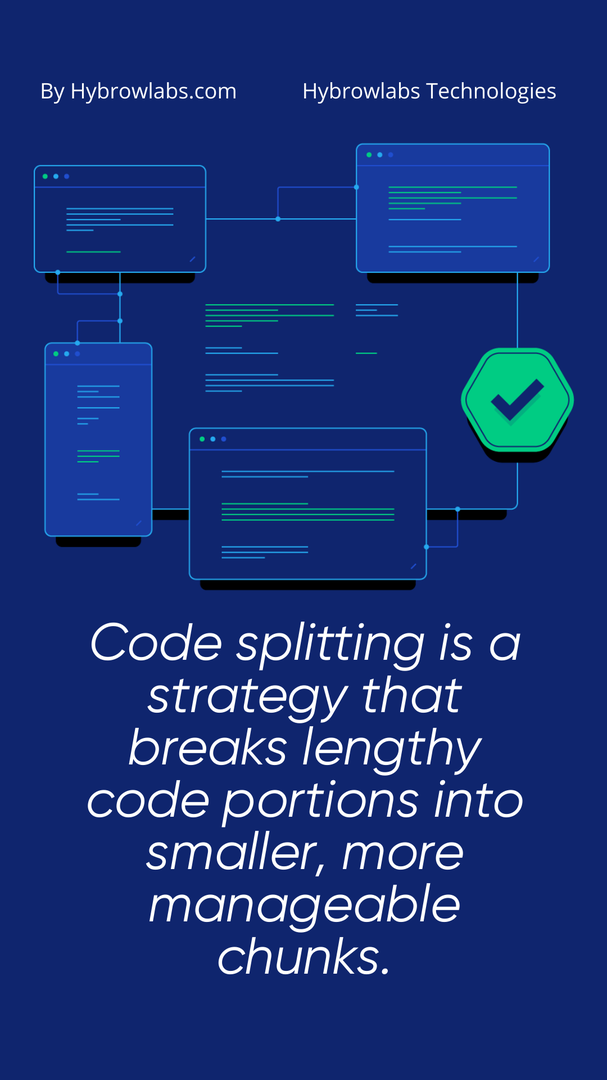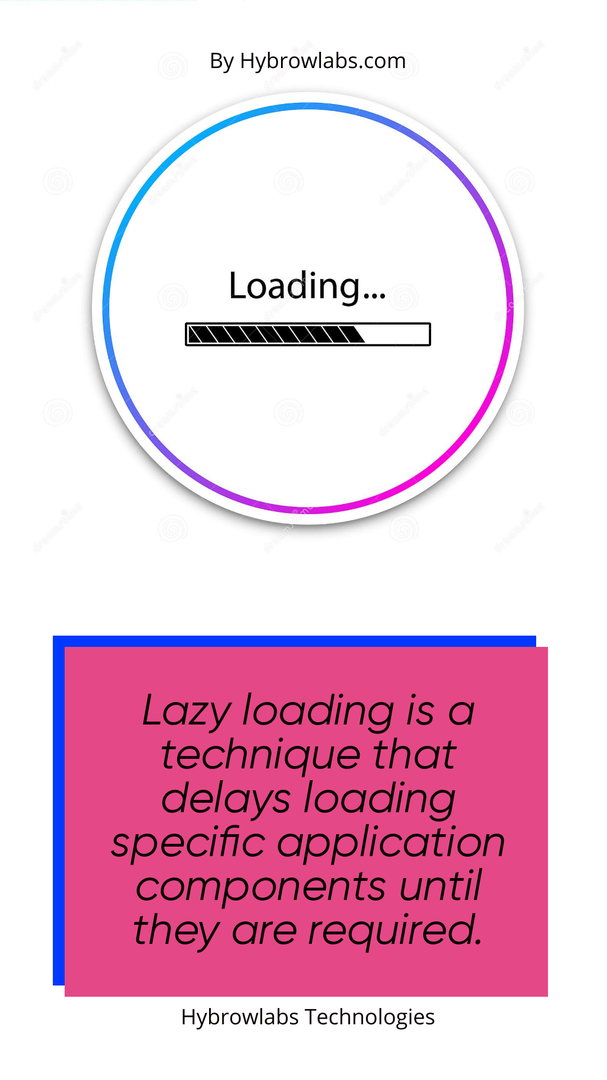WebAssembly and its role in modern web development:
WebAssembly is a virtual machine that operates at a lower level and enables programmers to execute high-performance applications on the web. This binary format can function on any modern web browser, making it an excellent choice for constructing web applications requiring speedy performance. Nevertheless, optimizing web assembly's performance can pose difficulties, particularly for developers who need to be more experienced in this technology.
Why is WebAssembly important?

WebAssembly's importance lies in its capacity to enable programmers to develop high-performance web applications using previously incompatible languages. With WebAssembly, developers can create more complex and efficient applications than what was achievable with traditional web technologies like JavaScript.
Challenges of WebAssembly Performance:
Despite its benefits, WebAssembly can be difficult to optimize performance. Performance issues with WebAssembly can include:
- Extra-large code
- Excessive memory use
- Excessive CPU use
- Not having access to the DOM (Document Object Model)
Best Practices for Optimizing WebAssembly Performance:
To optimize WebAssembly performance, programmers should adhere to best practices such as code splitting, lazy loading, and efficient memory usage. Let us delve into these methods in greater depth.
1. Code splitting for faster loading times:

A web development approach called "code splitting" divides lengthy code portions into smaller, more manageable chunks. When used with WebAssembly, this strategy involves breaking the code into smaller, more effective chunks that can be loaded quickly and easily.
(i) How Does Performance in WebAssembly Benefit from Code Splitting?
Developers can improve WebAssembly efficiency by reducing the amount of code that needs to be loaded and performed by the browser by breaking the code into smaller chunks. Upon loading a WebAssembly module, the browser must parse and compile the entire module before executing it. However, with code splitting, the browser can load and compile only the sections of the code required at any given moment, thereby decreasing the initial load time and boosting the application's overall performance.
(ii) Examples of Code Splitting Implementation:

With WebAssembly-based apps, code splitting can be implemented in various ways. A common strategy is using dynamic imports to load the WebAssembly module as needed. The initial load time is decreased, and the application's overall performance is enhanced since it can load only the required portions of the code at any given time.
Another strategy is to break up the WebAssembly code into smaller, easier-to-manage chunks using a bundler like Webpack or Rollup. It can be accomplished by setting the bundler up to divide the code according to specific standards, such as code dependencies or module size.
For instance, each WebAssembly module can be broken up into smaller bits and loaded as needed using dynamic imports if an application needs many WebAssembly modules. Alternatively, huge WebAssembly modules can be broken up into smaller pieces depending on function calls or code dependencies to speed up initial load times.
In conclusion, by minimizing the amount of code that needs to be loaded and executed by the browser, code splitting is a strategy that can enhance the efficiency of WebAssembly-based applications. Code splitting can be implemented in various methods, such as dynamic imports and bundling, so developers should pick the strategy that best suits the requirements of their application.
2. Lazy loading to reduce startup time:

Lazy loading is a web development method that delays loading specific application components until they are required. This technique allows WebAssembly modules to be loaded only when the application specifically requests them.
(i) What Are the Benefits of Lazy Loading for WebAssembly Performance?
Lazy loading can improve WebAssembly performance by accelerating the initial application load. When a WebAssembly module is loaded, the browser must parse, build, and execute it, which can take some time. Delaying the loading of the WebAssembly module until it is needed might reduce the initial load time of the application and improve its overall performance.
(ii) Examples of Lazy Loading Implementation:
There are numerous approaches to implementing lazy loading in WebAssembly-based apps. A common strategy is using dynamic imports to load the WebAssembly module as needed. It enables the application to delay loading the WebAssembly module until required, speeding up its initial load.
An application might, for instance, have a button that, when clicked, causes the loading of a WebAssembly module that contains a challenging calculation. By loading the WebAssembly module when the button is pressed rather than when the application first loads, the initial load time of the application can be decreased.
Another strategy is to load the WebAssembly module in the background using a " preloading " technique to make it available when needed. To instruct the browser to load the WebAssembly module in the background, use a link> tag with the rel="preload" property. It will take less time to parse, compile, and execute the module because it will be loaded when needed.
In conclusion, lazy loading is a method that boosts the efficiency of WebAssembly-based apps by waiting to load WebAssembly modules until they are required. Developers should select the method for lazy loading that best suits the requirements of their application from the available options, which include dynamic imports and preloading.
3. Optimizing memory usage for improved performance:
WebAssembly is a low-level assembly-like language restricting access to system resources when used in a sandboxed environment. Hence, memory use is a crucial factor to consider while creating WebAssembly-based applications. Memory used by WebAssembly is linear and made up of 64KB pages.
(i) Techniques for Reducing Memory Usage:
With WebAssembly-based apps, memory use can be decreased by several methods:
- Reduce memory utilization in the source code - Developers can make their WebAssembly code more efficient by unrolling loops and minimizing memory allocations that aren't necessary.
- Employ shared memory - A solution that enables several WebAssembly modules to share a single memory area is shared memory. Reducing the need to duplicate memory across several modules can lower an application's overall memory utilization.
- Employ a garbage collector: This technique allows applications to release memory that is no longer needed automatically. Garbage collection is not a feature that comes with WebAssembly by default. Still, it can be added with the help of third-party libraries like the Wasmtime runtime or the Boehm-Demers-Weiser garbage collector.
- Utilize typed arrays - Using specified data types like integers or floats, typed arrays allow you to represent data arrays in WebAssembly. Using typed arrays can decrease the memory needed to hold data in an application.
- Utilize memory growth: The grow memory function in WebAssembly enables dynamic runtime memory resizing. Memory utilization can be decreased and performance improved by using memory growth to decrease the initial amount of memory allocated.
(ii) Examples of Memory Usage Optimization:
In WebAssembly-based apps, employing shared memory to prevent duplication across many modules is one form of memory consumption optimization. Instead of generating a distinct instance for each module, creating and sharing one memory module instance across many modules is possible.
Using typed arrays to save memory is another illustration. For instance, employing a typed array can reduce the memory needed to store an array of huge numbers since it ensures that each entry only takes up the appropriate space.
While creating WebAssembly-based applications, memory optimization is a crucial factor to consider. To decrease memory utilization and boost the performance of their programmes, developers can employ strategies including limiting memory usage in the source code, using shared memory, employing a garbage collector, using typed arrays, and leveraging memory growth.
5. Profiling and Benchmarking:
Any application built using WebAssembly can benefit from performance optimization approaches like profiling and benchmarking. Performance bottlenecks and places for optimization in the code are found through profiling. To assess the effectiveness of optimizations, benchmarking entails monitoring the application's performance. There are numerous profiling and benchmarking tools out there that can aid developers in improving the speed of their WebAssembly applications, such as Chrome DevTools.
6. Other Tips and Tricks:
Other pointers and techniques for improving WebAssembly performance include:
- Using memory. The Grow function can dynamically increase a WebAssembly module's memory allocation size.
- Performance can be increased using Web Workers to do computationally demanding activities in separate threads, freeing up the main thread to handle user input and other duties.
- Performance can be increased by reducing compilation time by pre-compiling WebAssembly modules using Ahead-of-Time (AOT) compilation before they are loaded.
- Locating and improving application performance bottlenecks using profiling tools like the Firefox Profiler or the Chrome DevTools Performance tab.
(i) Use of SIMD (Single Instruction Multiple Data);
SIMD is a computing technology that allows for the simultaneous execution of the same operation on several bits of data. Thanks to SIMD, mathematically demanding processes like matrix multiplication and image processing can run more quickly in WebAssembly.
(ii) Minimizing the Use of JavaScript:
WebAssembly aims to provide a low-level, effective language for computationally demanding tasks. To maximize performance, it is advised to utilize JavaScript as little as possible in WebAssembly-based applications. That can be done by putting as much of the application functionality into WebAssembly modules as possible.
(iii) Use of Cache:
Caching is an ingenious technique employed to store frequently accessed data within a local cache, which can substantially enhance the operational efficiency of an application by mitigating the time taken to obtain data from a remote source. When viewed through the lens of WebAssembly, caching can be leveraged to warehouse compiled WebAssembly modules, which can effectively shorten the time required for parsing and compiling a module as and when needed.
To optimize the performance of WebAssembly-based applications, numerous strategies can be implemented, which include using Single Instruction Multiple Data (SIMD) instructions, limiting the usage of JavaScript, employing caching techniques, utilizing memory growth, implementing Web Workers, using Ahead-Of-Time (AOT) compilation, and availing the benefits of profiling tools.
Conclusion:
Improving WebAssembly performance is essential for developing responsive web applications. If you want your WebAssembly-based applications to run better, there are various approaches you can take, including code separation, lazy loading, and memory optimization. Benchmarking and profiling are also crucial methods for locating performance bottlenecks and gauging the success of modifications. As you work on improving your WebAssembly performance, you may want to consider utilizing the WebAssembly services offered by Hybrowlabs. With their expertise in WebAssembly development, they can help you create high-performance WebAssembly applications that offer a great user experience.
FAQs:
1. How does WebAssembly compare to other web technologies, such as JavaScript, regarding virtual execution machines?
A: WebAssembly is strategically designed to complement and optimize pre-existing web technologies like JavaScript. It provides an efficient, low-level virtual execution machine that can execute code more promptly than JavaScript, making it an impeccable choice for applications that require high performance and speedy response.
2. Is WebAssembly universally suitable for all web applications?
A: A: Depending on the particular needs of the web application in issue, WebAssembly's applicability may be better than others. Before deciding if WebAssembly is the best option for your web development needs, it's critical to examine and assess your application's precise requirements.
3. Can WebAssembly be used in conjunction with HTML and CSS and other web technologies?
A: Web assembly can be used in conjunction with HTML and CSS and other web technologies. The marriage between these web technologies presents a powerful tool for developing rapid and responsive web applications, reinforcing that WebAssembly is a must-have technology for any proficient web developer.
4. What are some notable recommendations for fine-tuning and enhancing WebAssembly performance?
A: There are various techniques that adept developers can leverage to optimize and uplift WebAssembly performance. One such technique is code-splitting, which involves disabling a large WebAssembly module into smaller, more manageable segments that can be loaded and executed more rapidly. Another productive technique is lazy loading, which entails loading WebAssembly module parts on-demand rather than all at once. Additionally, developers can execute memory usage optimization techniques like "linear memory," which involves allocating memory in a linear, contiguous block, thereby improving access times and reducing time and resource costs.






a3dc85.jpg)

.jpg)
fd8f11.png)


.jpg)
.jpg)